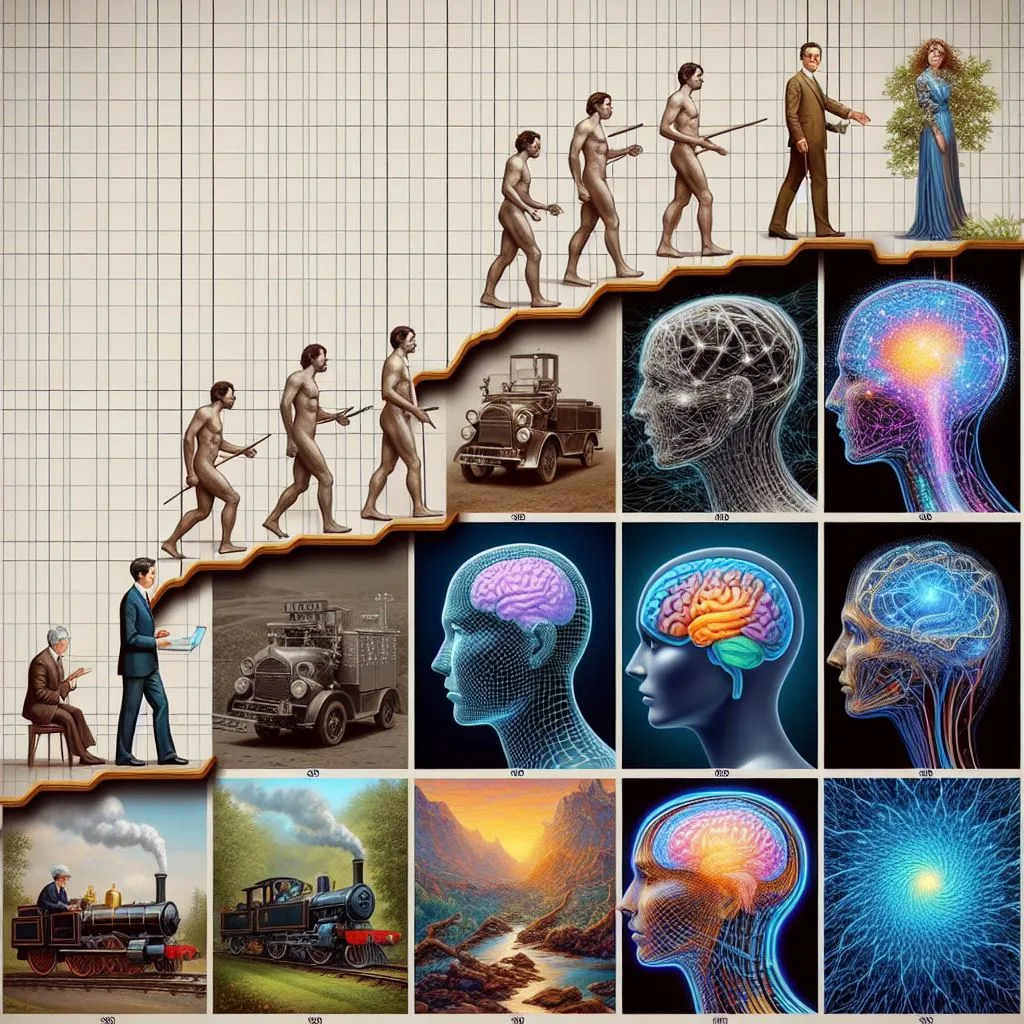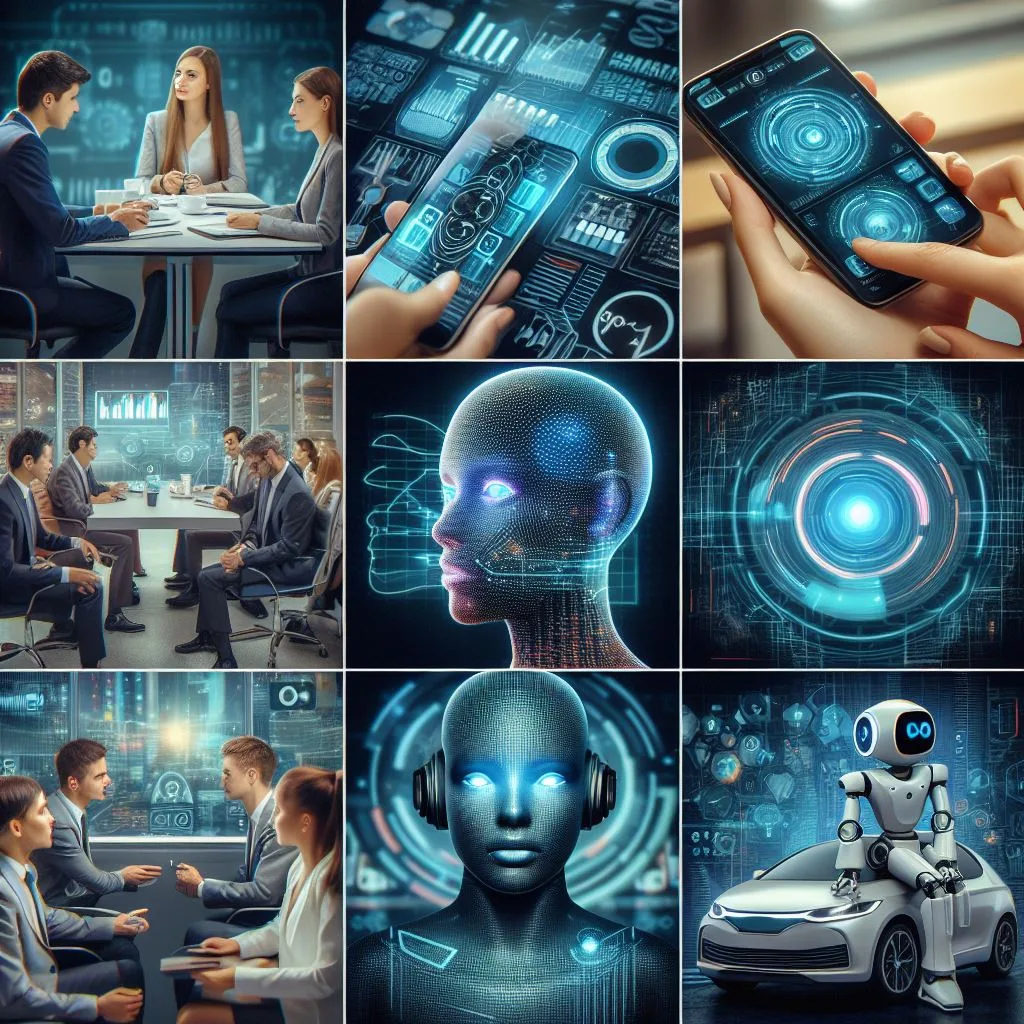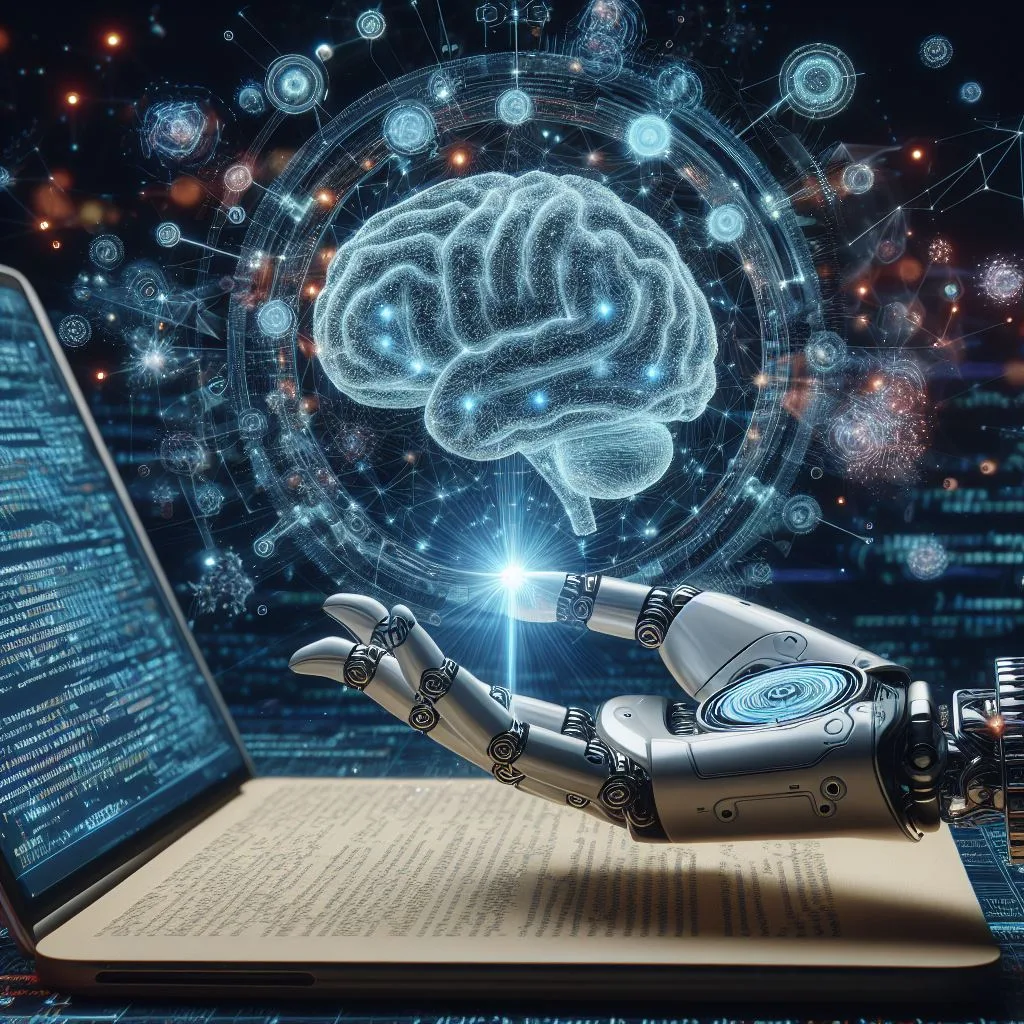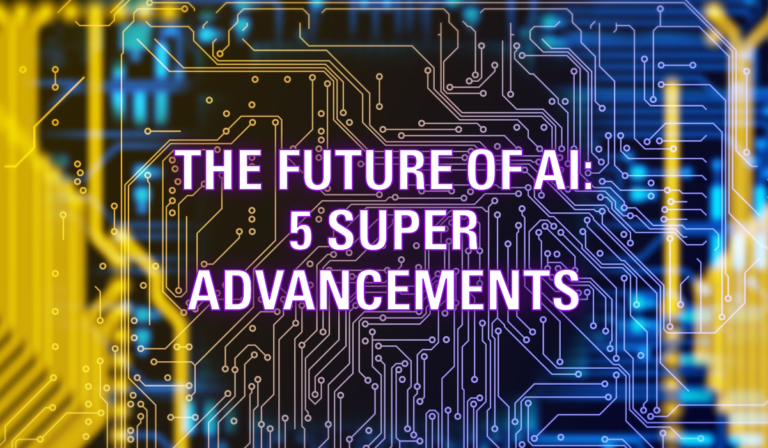Welcome to our thrilling journey into the fascinating world of generative AI! Let's imagine a world where a mere sentence can trigger an explosion of creativity and give birth to a stunning piece of art, where businesses can evolve and become smarter overnight. Healthcare can be transformed into a personalized experience that caters to our unique needs. This world is not a fantasy anymore but a reality we are entering, thanks to the wonders of generative AI.
In this article, we'll dive into the incredible advancements and infinite possibilities this technology offers. From creating breathtaking artwork with just a few words to revolutionizing how companies interact with us, generative AI is transforming the game in countless ways that we have yet to discover.
Evolution of Photorealistic Image Generation
The landscape of digital imagery is on the brink of a significant transformation, driven by the next generation of Generative AI. This cutting-edge technology redefines the boundaries of creativity and realism in image generation. As we delve into this new era, the capabilities of AI models, such as those seen in DALL-E 2 and Imagen, are evolving to create images that are not just imaginative but strikingly photorealistic.
The advent of these sophisticated models marks a pivotal moment in Generative AI. They can now consider a myriad of parameters, leading to the production of images that are not only rich in detail but also seamless in their integration of various concepts. This leap forward is a win for artists and designers and signifies a broader shift in how we conceive and interact with digital content.
Photorealistic image generation by Generative AI is set to revolutionize multiple sectors, extending far beyond traditional content creation. From advertising and entertainment to education and therapy, the applications are as vast as they are impactful. Moreover, integrating Generative AI with blockchain technology is paving the way for new digital art and collectibles, such as interactive AI characters that can be traded as non-fungible tokens (NFTs).
This remarkable progress in Generative AI is not just about the technology itself but what it represents for human creativity. It offers a new canvas, a new set of tools that artists and creators can use to push the boundaries of imagination. As we continue to explore and refine these capabilities, the next generation of Generative AI stands ready to transform the visual landscape, making the once-impossible now possible.

Evolution of Photorealistic Image Generation: Examples
The next generation of Generative AI has brought forward some fascinating examples that showcase the evolution of photorealistic image generation:
- DALL-E 2 and Imagen are among the most advanced AI models dedicated to creating highly detailed and realistic images from textual descriptions. DALL-E 2, developed by OpenAI, can generate unique images based on complex prompts, while Google's Imagen pushes the boundaries further toward creating high-fidelity, photorealistic images.
- Synthesys Studio: An example of the practical application of this technology, Synthesys Studio utilizes text-to-image AI generators to achieve remarkable levels of photorealism. This tool allows users to create detailed and realistic images directly from text prompts, showcasing the potential of Generative AI in content creation.
- AI-driven Digital Art and NFTs: Integrating Generative AI with blockchain has led to new digital art forms. AI startups are now combining the power of image-generating models with blockchain technology to create interactive AI characters. These characters can be traded as non-fungible tokens (NFTs), opening up a new frontier in the digital art world.
- Virtual Staging and Interior Design: Photorealistic image generation is used for virtual staging in the real estate and interior design industries. Platforms like RoOomy and Decormatters leverage Generative AI to simulate how a space might look after decoration or renovation, providing clients with a realistic preview without physical staging.
- Medical Imaging and Simulation: In healthcare, Generative AI is being utilized to create realistic images of human anatomy for educational and diagnostic purposes. This not only aids in medical training but also improves patient communication by providing clear, understandable visualizations of medical conditions.
These examples illustrate the vast potential and diverse applications of photorealistic image generation powered by the next generation of Generative AI. As these technologies continue to evolve, they promise to revolutionize numerous industries, from creative arts to healthcare, by providing tools that enhance human creativity and understanding.
Advancements in Speech Synthesis Technology
The next generation of Generative AI is revolutionizing how we interact with technology through significant advancements in speech synthesis. This evolution transforms text-to-speech (TTS) systems from robotic and monotonous voices to lifelike, nuanced, multilingual speech outputs. As we delve into this new era, the focus is not only on the clarity and fluency of generated speech but also on its ability to convey emotions, accents, and quirks unique to human speech.
One of the standout examples of this advancement is the development of AI models capable of voice cloning. This technology can accurately replicate a person's voice, allowing for various applications from personalized audiobooks and podcasts to more authentic virtual assistants. Imagine a world where your e-learning modules are narrated in the calming voice of your favorite educator or your family stories are read back to you in the voices of loved ones.
Furthermore, companies like Synthesys are at the forefront, offering customizable, lifelike AI voices. These advancements are not just about creating voices that sound "real" – they're about creating voices that fit any message's specific emotional and contextual needs. Whether it's a cheerful voice for a children's story or a solemn tone for a documentary, the new wave of speech synthesis can meet the demand.
In educational materials, the impact of these advancements is particularly noteworthy. Generative AI enables the creation of diverse educational content that can cater to various learning preferences and needs. Students can receive instruction in a voice that they find engaging and comforting, breaking down barriers to learning and making education more accessible.
The advancements in speech synthesis technology signify a profound shift in our interaction with machines. They are making technology more human, relatable, and more effective in fulfilling our needs. As we continue to explore and refine these capabilities, the future of communication looks increasingly diverse and personalized, thanks to the next generation of Generative AI.

Next Generation of Generative AI: Multimodal Generative AI Models
The next generation of Generative AI is marked by the emergence of multimodal models, a significant leap forward in AI technology. These models are adept at understanding, interpreting, and generating information across various forms of data, including text, images, audio, and video. This convergence of modalities enables a more integrated and seamless interaction between humans and machines, opening new avenues for creativity and problem-solving.
A prime example of this advancement is OpenAI's GPT-4, a state-of-the-art model demonstrating impressive capabilities in generating coherent and contextually relevant text and interpreting images. This multimodal approach allows for a more natural and intuitive user experience, as the AI can understand and respond to queries with a combination of text and visuals, much like human communication.
Another noteworthy development is in AI-driven design, where multimodal models facilitate the generation of creative content that encompasses visual and textual elements. Tools like Canvas Magic Write and Adobe Firefly are leveraging these advancements to allow users to create customized designs and written content simultaneously, streamlining the creative process and making the design more accessible.
In education and research, multimodal Generative AI models transform how knowledge is consumed and produced. They enable the creation of interactive learning materials that combine text, images, and audio, catering to different learning styles and making complex subjects more understandable.
The rise of multimodal Generative AI models represents a paradigm shift in artificial intelligence, moving towards systems that can understand and generate human-like content across different media. This enhances the user experience by making AI interactions more natural and intuitive and broadens the scope of AI applications, from creative arts and design to education and beyond. As these models evolve, they promise to redefine our relationship with technology, making it more collaborative, creative, and multimodal.
Innovations in Generative AI Music
The realm of Generative AI is experiencing a remarkable transformation with the advent of innovations in AI-generated music. This new wave in the next generation of Generative AI is reshaping how music is composed and produced and redefining the listener's experience. These advancements enable machines to understand, interpret, and create music in previously unimaginable ways, leading to a fusion of computational power and artistic expression.
AI music generators like OpenAI's Jukebox, Google's Magenta, and AIVA are at the forefront of this revolution. These systems can compose music in various styles and genres, from classical to contemporary pop, by learning from vast datasets of existing music. This capability opens up new possibilities for artists and producers, offering them an infinite palette of sounds and arrangements to inspire their creations.
Moreover, AI integration in music democratizes music production, making it accessible to those without formal musical training. Individuals can now collaborate with AI to bring their musical ideas to life, breaking down barriers between the technical aspects of music production and creative expression.
The innovations in Generative AI music extend beyond composition to performance and personalization. AI-driven systems can now perform music with nuance and expression close to human musicians, providing personalized music experiences tailored to the listener's mood, activity, or preferences. This customized approach transforms how we interact with music, making it a more immersive and adaptive part of our lives.
Furthermore, the intersection of Generative AI and music fosters new interactive and generative art forms. AI-generated music can adapt in real time to game environments, narrative contexts, or live performances, creating a dynamic and engaging experience for audiences.
In summary, the innovations in Generative AI music are not just altering the landscape of music production and consumption but also paving the way for a future where music is more accessible, personalized, and intertwined with our daily lives. As we continue to explore the possibilities of AI-generated music, we are witnessing the unfolding of a new era in the music industry, powered by the next generation of Generative AI.

Revolutionizing Video Production with Generative AI
The next generation of Generative AI is set to revolutionize video production, altering the landscape of filmmaking, content creation, and visual storytelling. This transformation is characterized by integrating AI technologies to generate, edit, and enhance video content at unprecedented speeds and scales. The innovations in this field empower creators with tools that streamline the video production process, reduce costs, and unlock new creative possibilities.
AI-driven platforms like RunwayML and Synthesia are leading this revolution by offering tools that automate various aspects of video production, from editing and color correction to visual effects and animation. These advancements make sophisticated video production techniques more accessible to a broader range of creators, from independent filmmakers to content marketers.
One of the most groundbreaking aspects of Generative AI in video production is its ability to create realistic digital humans and environments. This technology enables high-quality video content without requiring extensive physical sets or large casts of actors. For instance, AI-generated characters can replace human actors for certain scenes, reducing the logistical and financial challenges associated with traditional filming.
Moreover, integrating Generative AI into video production extends to scriptwriting and storytelling. AI algorithms can analyze vast amounts of data to suggest plot twists, character developments, and dialogues, assisting writers in crafting more engaging and diverse narratives.
The personalization aspect of Generative AI also plays a significant role in video content. Platforms can now deliver personalized video experiences to viewers, tailoring content to individual preferences, behaviors, and contexts. This level of customization is transforming advertising, education, and entertainment, making content more relevant and impactful.
The revolution in video production facilitated by the next generation of Generative AI is not just about automating tasks or reducing costs. It's about expanding the creative horizons for video creators, enabling them to tell stories in new and innovative ways. As these AI tools continue to evolve, they promise to democratize video production further and redefine visual content's future.
How The future looks alike in other Sectors
The future of generative AI is promising, with a range of advancements expected across different fields and industries. Here are some key trends and advancements based on recent insights:
- Prompt-based Creation: There's an increasing trend in using generative AI for art, music, and natural language processing, driving a need for skills in prompt engineering. This could revolutionize user experience through prompt-based creation tools while ensuring data security.
- APIs and Enterprise Integration: New APIs are making integrating various generative AI capabilities into enterprise applications easier, enhancing productivity and customer relationship management. Companies like Microsoft and Salesforce are already exploring these possibilities.
- Reimagining Business Processes: As generative AI continues to evolve, businesses are expected to automate or augment more tasks, potentially leading to entirely new business models and experiences that can make small businesses appear more prominent and significant businesses operate faster.
- Healthcare Innovations: In healthcare, generative AI could significantly improve patient outcomes and efficiency for healthcare professionals by digitizing medical documents and personalizing medicine and patient engagement.
- Synthetic Data and Privacy: Using generative AI to create synthetic data could address privacy concerns and regulations while enhancing the ability to rapidly develop new AI models and decision-making processes.
- Hybrid Models and Reliability: Combining large language models with symbolic AI could lead to more reliable outputs, especially in regulated industries, by providing accurate and controllable narratives.
- Personalized Applications: The rise of personalized generative applications could lead to the development of tools tailored to individual user preferences, enhancing learning, productivity, and entertainment experiences.
From another perspective, integrating generative AI with blockchain and IoT is seen as a significant step forward, promising enhanced trust, security, and personalized experiences. However, this comes with challenges like ethical concerns, the need for robust regulatory frameworks, and protection against adversarial attacks. Addressing these issues through responsible AI development practices, ethical guidelines, and continuous model monitoring will be crucial for sustainable advancement.
Regarding future trends, we're looking at a landscape where generative AI continues to evolve with more efficient, versatile models. This includes advancements in meta-learning, few-shot learning, and sustainable training methodologies. Furthermore, the cross-domain applications of these models and interdisciplinary collaborations will likely fuel innovation across sectors like healthcare, finance, and the arts. Additionally, the impact of generative AI on job markets and education is expected to be significant, with new roles emerging that focus on AI management, ethics, and development.
Overall, the future of generative AI holds vast possibilities for innovation and transformation across various domains, but it also necessitates careful consideration of ethical, security, and societal impacts.
FAQs on Next Generation of Generative AI
The Next Generation of Generative AI is characterized by more advanced algorithms, enhanced learning capabilities, and broader applications. This evolution allows for greater creativity, efficiency, and problem-solving abilities in various domains such as art, healthcare, and business.
Unlike traditional AI, which typically focuses on recognizing patterns or making decisions based on predefined rules, Generative AI can create new and original content. It can generate text, images, and data that mimic human-like understanding and creativity.
Generative AI can revolutionize business processes by automating creative tasks, generating personalized content for customers, improving decision-making with predictive analytics, and optimizing operational efficiencies. This leads to cost savings, increased productivity, and enhanced customer experiences.
Yes, ethical concerns include data privacy, the potential for bias, intellectual property issues, and the impact on employment. Addressing these concerns is crucial for responsible development and deployment of Generative AI technologies.
To stay informed about the latest in Generative AI, one can follow relevant publications, attend industry conferences, participate in online communities, and take courses specializing in AI and machine learning.





Pingback: 7 Best Tech for Good: How Technology is Driving Social Impact and Humanitarian Efforts - techlooters.com